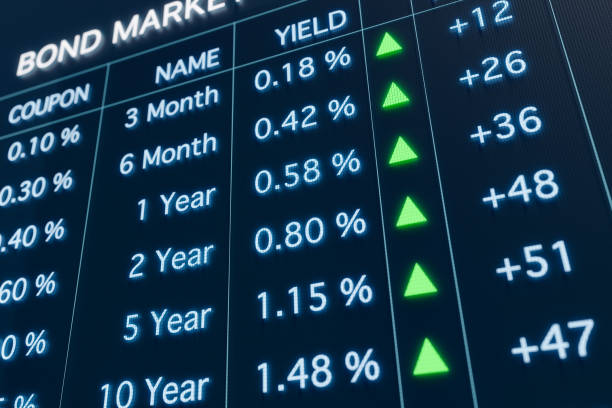How to Compare the Yields of Different Bonds in 2022?
Advertisement
Triston Martin
Jan 24, 2024
It can be difficult to compare the yields of different bonds, but with a little bit of research, it can be done. In this blog post, we'll show you how to compare yields and make an informed decision about which bond is right for you. We'll also provide some tips on how to get the most out of your investment. Thanks for reading!
What is a bond yield and what factors affect it

A bond yield is a measure of the return on investment that an investor can expect from a bond. Yields are typically determined by two main factors: the price of the bond and its interest rate. The higher the price of the bond, the lower its yield will be, and vice versa. Factors such as economic conditions, inflation rates, and market volatility can also affect the yield of a bond.
If you are interested in comparing the yields of different bonds, there are several tools that you can use to help you make an informed decision. One popular method is to use bond yield calculators, which allow you to input specific parameters such as maturity date and coupon rate, and then calculate the yield for various bonds. You can also consult financial websites or use other financial software programs to compare yields and make an informed investment decision.
How do you compare the yields of different bonds maturing in 2022
One effective way to compare the yields of different bonds maturing in 2022 is to use a bond yield calculator. This tool allows you to enter the bond's coupon rate, face value, and maturity date, as well as any other relevant information about the bond. Once you have entered all of this data into the calculator, it will automatically calculate the bond's yield based on its current market value.
This may involve reading financial news articles, monitoring trading prices and yields on various bond exchanges, or talking to investment professionals who are familiar with these markets. By doing so, you can gain a better understanding of the factors that are affecting bond yields and use this information to make more informed decisions about which bonds might be best for your needs.
Why are some bonds more desirable than others when they have the same maturity date and interest rate

Several factors can influence the desirability of different bonds, such as yield and risk. In general, higher-yielding bonds will be more desirable than lower-yielding bonds, since they offer a greater potential return to investors. Likewise, bonds with lower risk will also be generally more attractive than those with greater risk, as investors want to minimize the possibility of losing their principal investment.
When comparing the yields of different bonds in 2022, it is important to consider several key factors, including the coupon rate and the term structure of each bond. For example, a bond with a higher coupon rate may offer a greater return than one with a lower coupon rate, but it may also have a higher interest rate risk or liquidity risk, which could potentially offset its potential gains.
Wrap up with a summary of what readers learned in today's post
Comparing the yields of different bonds can be a daunting task, especially if you don't know how to navigate through the various factors that are involved. In today's post, we will discuss some key considerations to keep in mind when comparing bond yields, including maturity dates, interest rates, and more.
To start, it's important to look at the maturity dates of different bonds. Generally speaking, longer maturities tend to have higher yields, as investors are willing to take on more risk in exchange for potentially higher returns. Additionally, it's important to consider the interest rates of different bonds. As a general rule, high-yield bonds will typically have lower interest rates than lower-yield bonds, since investors are willing to accept higher risks in exchange for greater potential profits.
FAQs
How do you compare different bonds?
One effective way to compare the yields of different bonds is to use a financial calculator, such as one provided by Thomson Reuters. This calculator allows you to enter the coupon rate and maturity date for each bond you are considering, and it will automatically calculate the yield for each bond based on these parameters.
How do you compare yields?
Several different factors can impact the yield of a given bond, including the coupon rate, maturity date, and risk level. To compare yields effectively, you should carefully consider each of these factors when evaluating different bond options. Additionally, many financial calculators can be used to help you easily compare yields across multiple bonds.
What are the best bonds to invest in 2022?
There is no one "best" type of bond to invest in, as this will depend largely on your individual investment goals and risk tolerance. Some popular bond options include corporate bonds, government bonds, municipal bonds, and high-yield bonds. Additionally, it can be helpful to seek the advice of a financial advisor when choosing the right types of bonds to invest in for your portfolio.
Conclusion
I hope this guide has helped you to compare the yields of different bonds in 2022. To do this effectively, it is important to consider several factors, such as the coupon rate, maturity date, and risk level. You should also be familiar with the yield curve, which can help you better understand where your bond falls within the market and how likely it is to perform well in the future. With these tips in mind, you can feel confident in your ability to make informed decisions when investing in bonds.







